President’s message: Transparency in the race to net zero
Reliable Controls president Tom Zaban explores how we can help you foster transparency in the race to net zero.




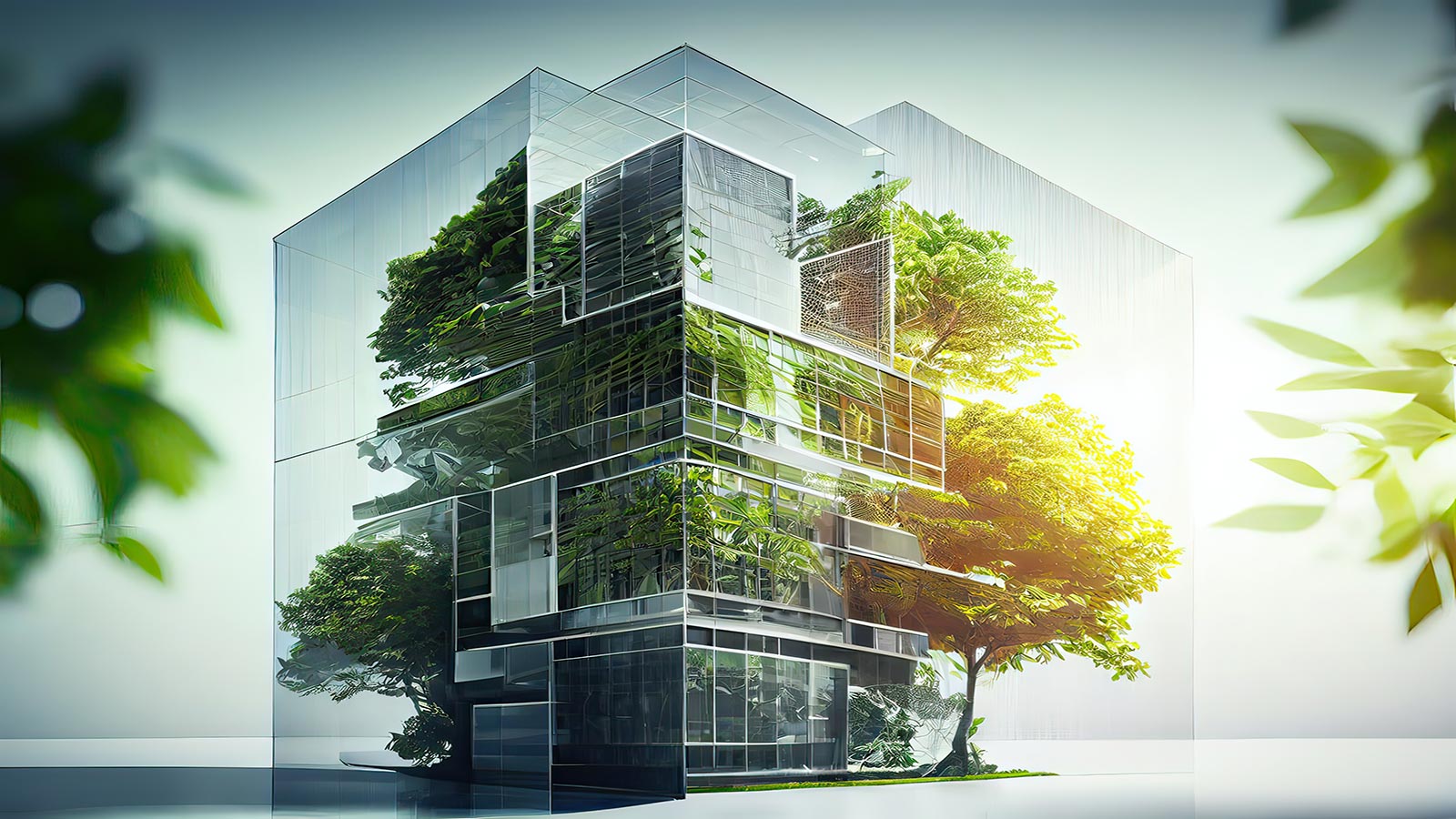
At an ASHRAE chapter meeting on Vancouver Island, where Reliable Controls is headquartered, a young engineer in training started a conversation with me, and before I knew it, we were discussing green buildings on Vancouver Island. She asked me if I knew the date of the first LEED certification on the island. Having been an active participant in green buildings for many years, I was surprised—and a bit disappointed—that I didn’t know the answer off the top of my head. But I certainly knew where to look to find it.
The Canada Green Building Council (CaGBC) maintains a detailed project database of all registered and certified LEED and Zero Carbon projects in Canada. As of this writing, there are 142 registered LEED and Zero Carbon green buildings on Vancouver Island, of which 105 have achieved one level of certification.
Once a project is registered, it can take months, even years, to achieve certification. Figure 1 shows green building registrations on Vancouver Island began in 2001, but certifications started gaining momentum only around 2011.
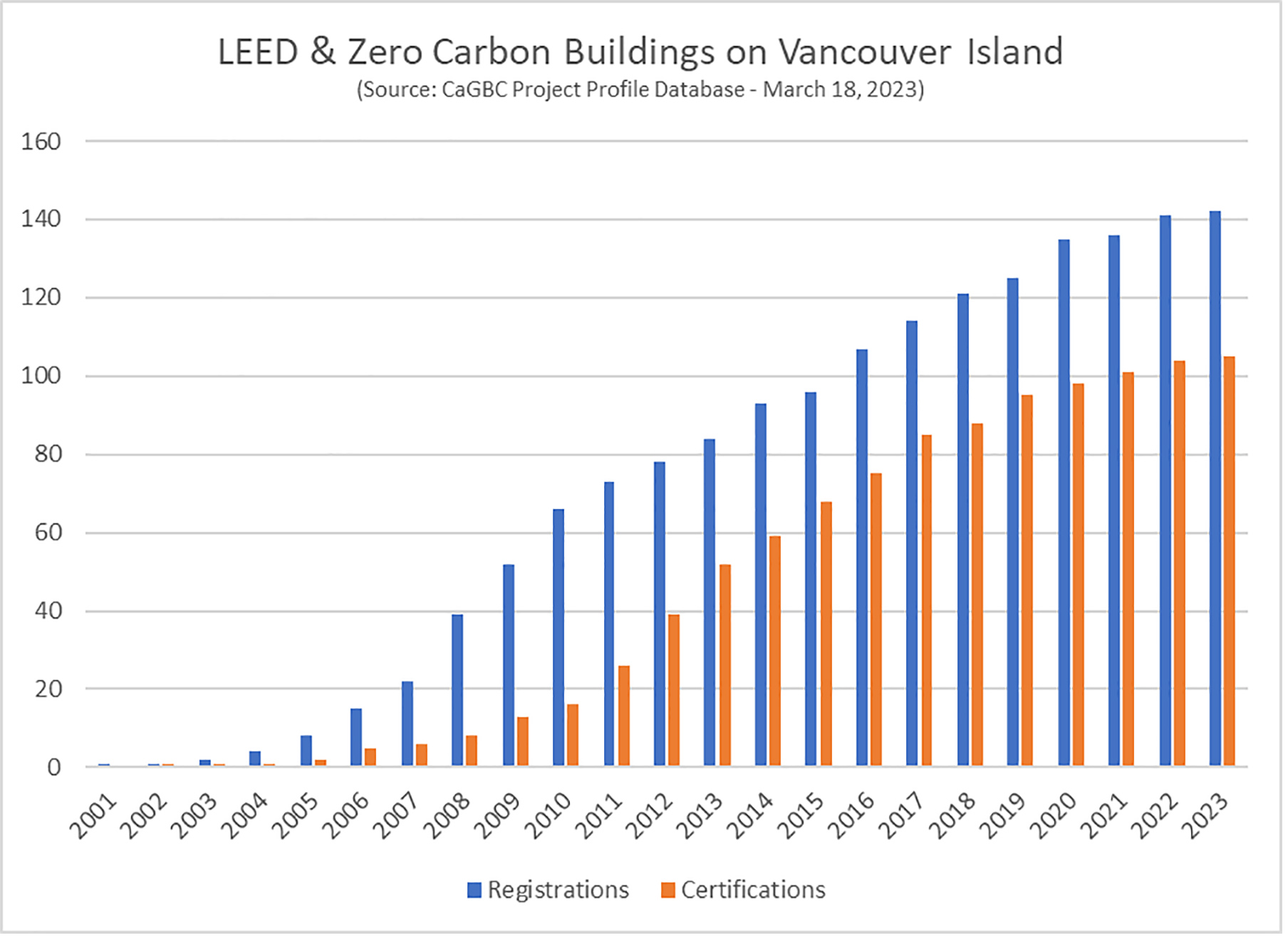
Figure 1
The LEED rating system ranks a green building’s design using four ascending levels of certification: certified, Silver, Gold, and Platinum. Zero Carbon buildings’ design and performance are either certified or not. On Vancouver Island, 57 (54.3 percent) of the 105 certified LEED and Zero Carbon buildings have achieved LEED Gold (Figure 2).
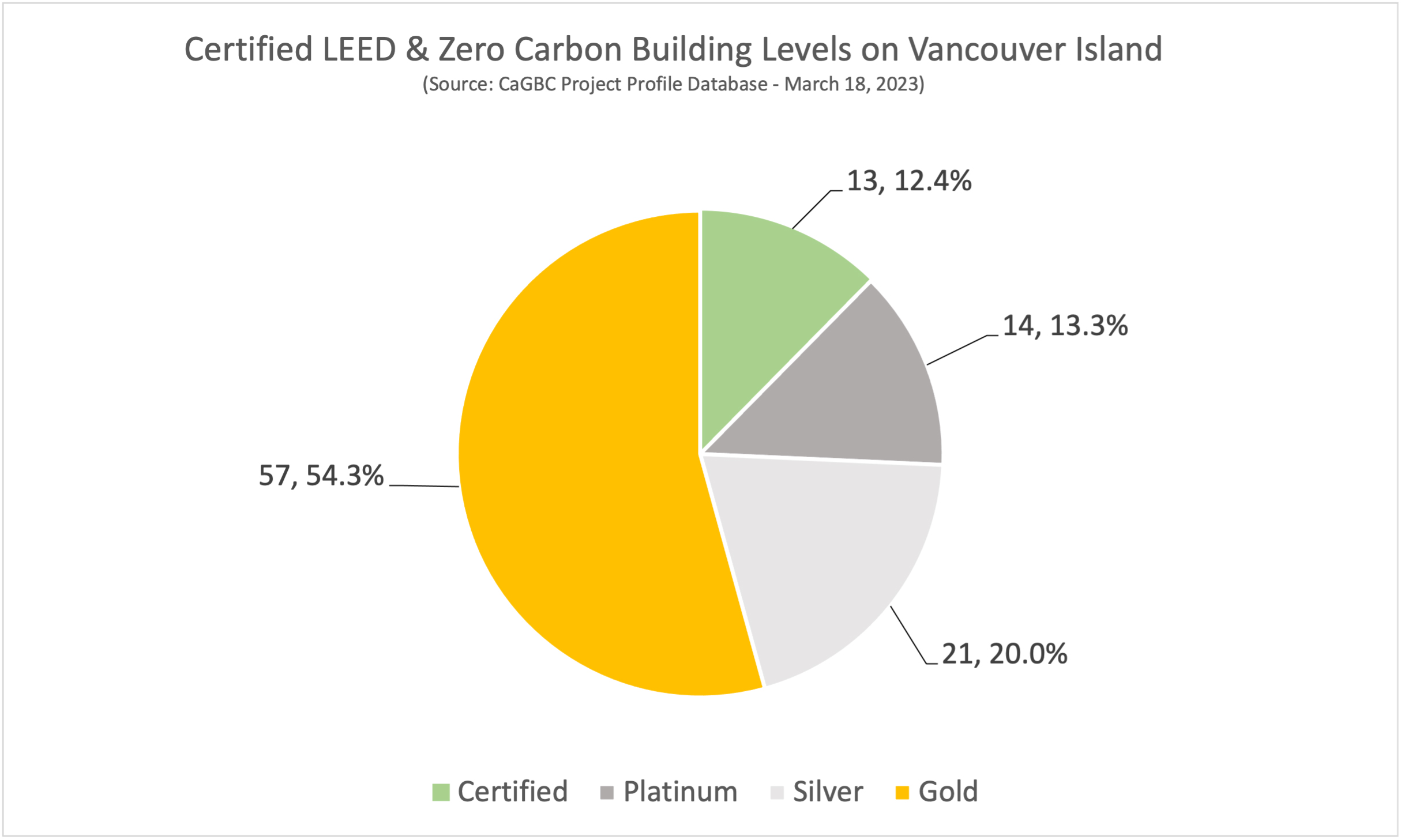
Figure 2
As you might expect, the certified green buildings on Vancouver Island include every type of building. Office, education, mixed use, residential, and retail buildings comprise the majority of certified buildings (Figure 3).
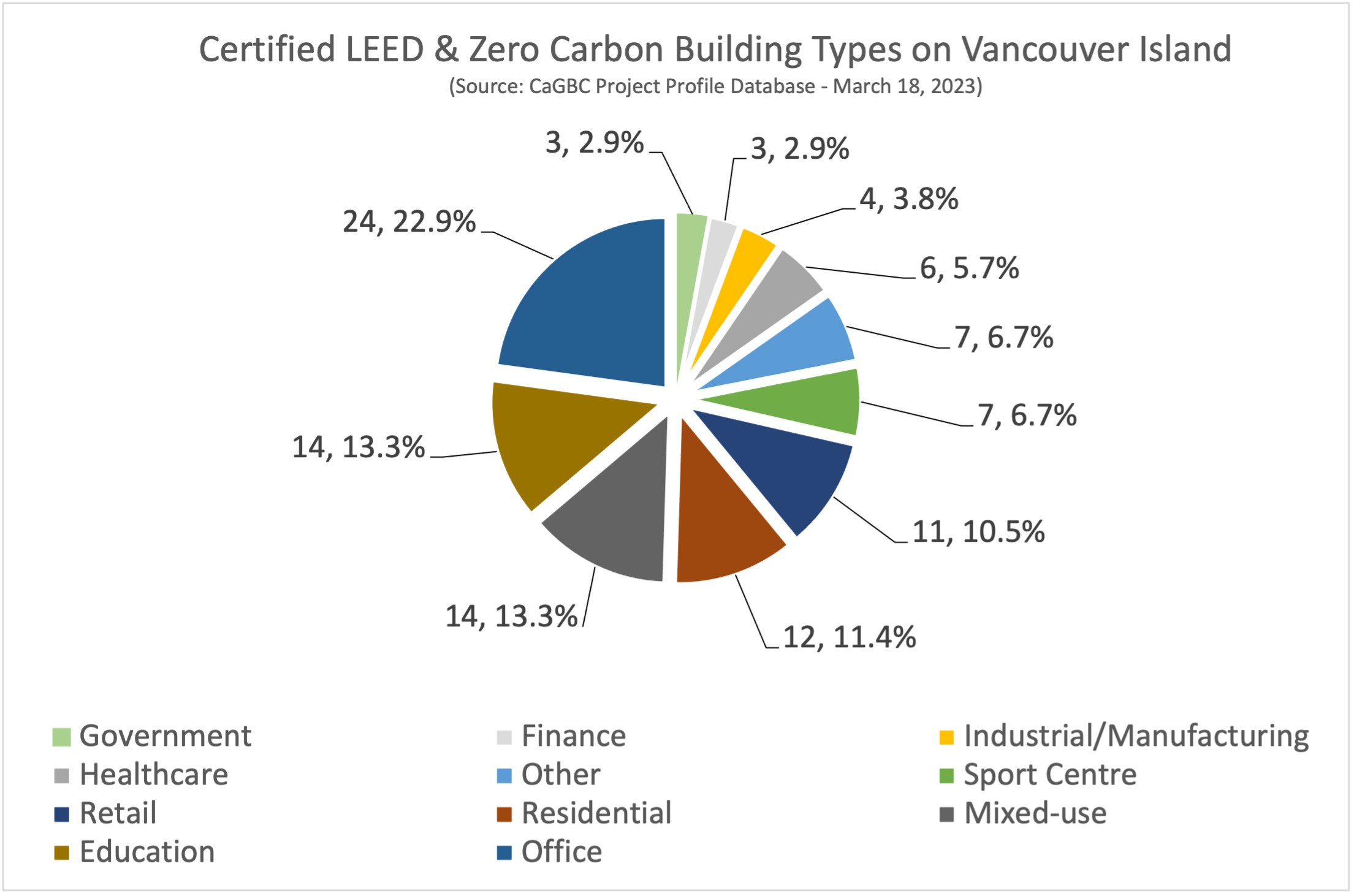
Figure 3
A common industry benchmark to quantify building energy performance is energy use intensity (EUI), typically expressed in units of kWh/m2/yr. If the 105 certified green buildings on Vancouver Island had been designed and constructed using today’s conventional (non-green) methods and codes, they might have achieved a reasonably respectable EUI of 160 kWh/m2/yr. Multiplying this EUI by each building’s floor area as reported in the CaGBC profile database, the 105 buildings would have collectively consumed about 113.5 GWh of energy for each full year of operation.
Since these buildings were actually certified green, we can estimate their aggregated energy savings. Assuming an EUI of 110 kwh/m2/yr for LEED- and Zero Carbon–certified buildings, 90 kWh/m2/yr for LEED Silver buildings, 70 kWh/m2/yr for LEED Gold buildings, and 50 kWh/m2/yr for LEED Platinum buildings, the 105 buildings would have collectively consumed only 49.1 GWh of energy each year. This means they save approximately 64.4 GWh of energy for each full year of operation! Assuming the energy source for each building is evenly split between electricity and natural gas, the certified buildings on the island prevent 6,125,540 kgCO2e, or approximately 6,126 metric tons, of carbon dioxide equivalent gas emissions from being released into the atmosphere each year—the same as removing 1,332 passenger vehicles from Vancouver Island roads.
So after a long-winded response to the young engineer’s short question, I learned the first LEED registration on Vancouver Island was submitted by the Vancouver Island Technology Park in Victoria, BC. This green facility was registered on May 5, 2001, earned the island’s first LEED certification on February 4, 2002, and has been in continuous operation since, making a positive annual contribution to Canada’s greenhouse gas emissions reduction plan.
How many certified green buildings are in your area?
Visit your local green building council’s website to learn more.
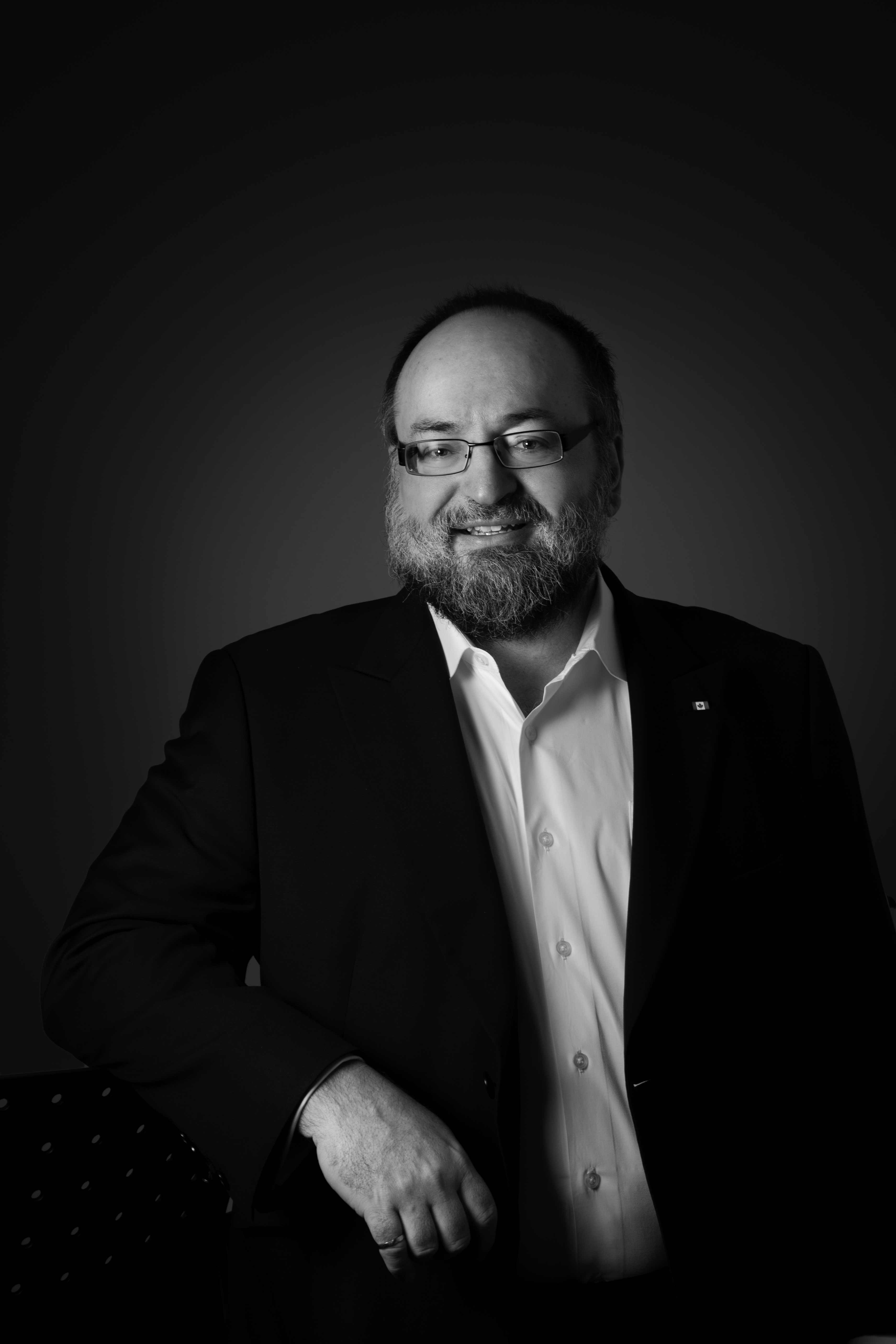
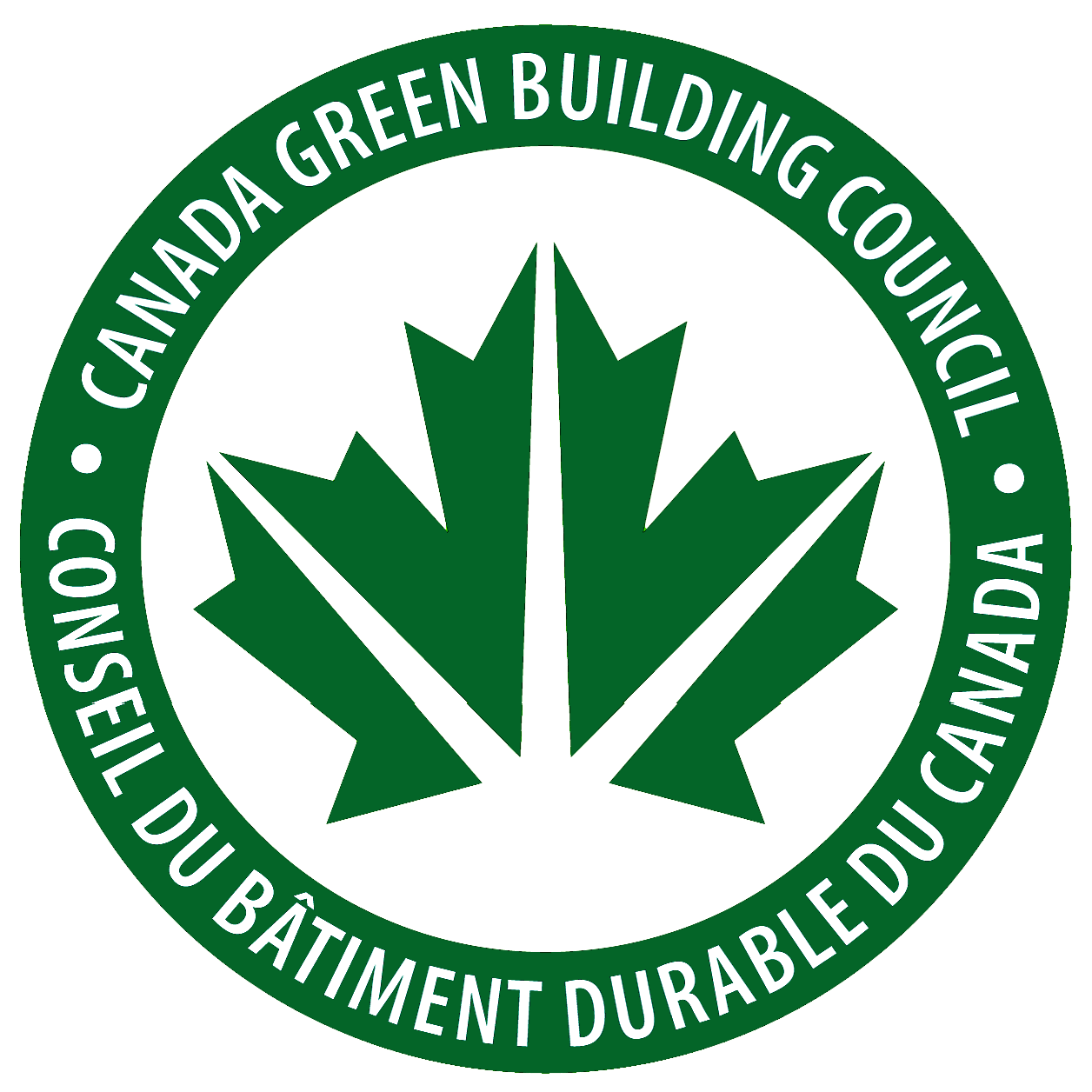
Tom Zaban, P.Eng, LEED Green Associate
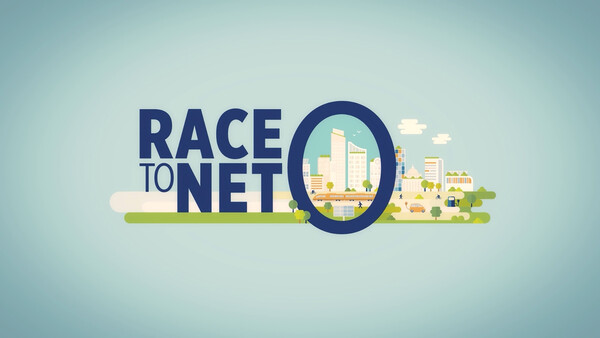
Reliable Controls president Tom Zaban explores how we can help you foster transparency in the race to net zero.
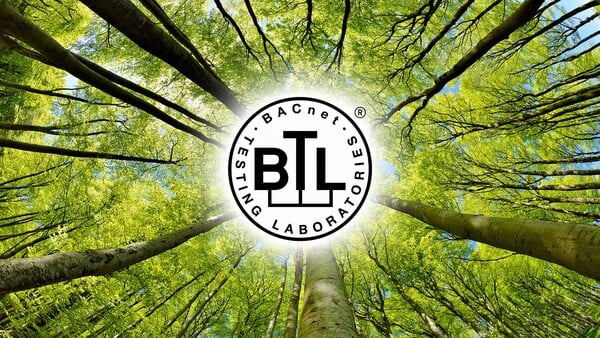
Reliable Controls president Tom Zaban reflects on 30 years of the BACnet protocol.
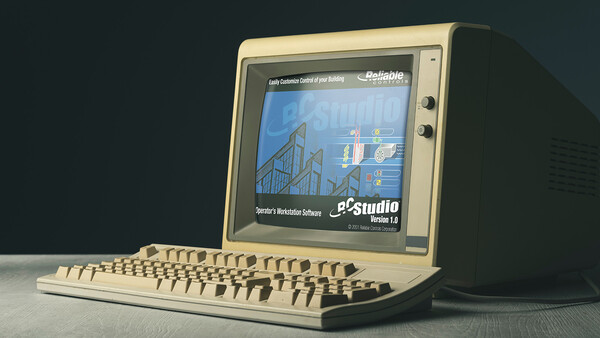
Celebrating nearly 25 years of RC-Studio, the backbone of our suite of building automation tools.
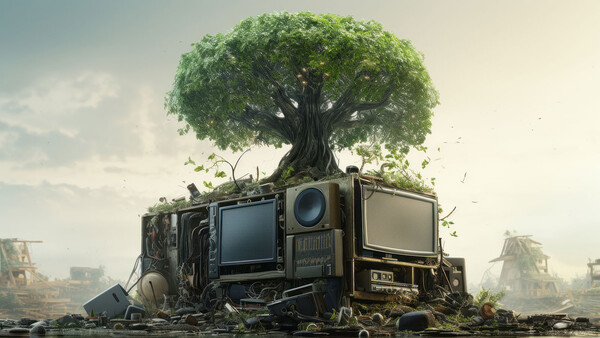
Learn how Reliable Controls promotes a circular economy, starting with design choices.
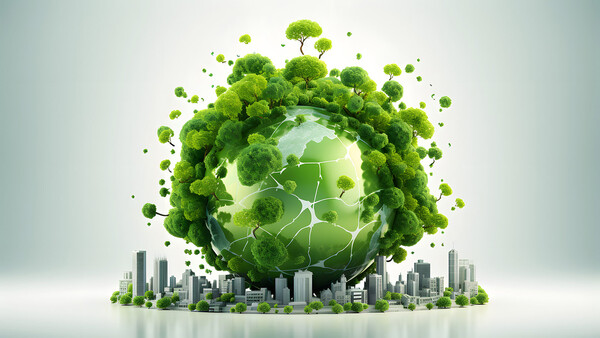
Learn about encouraging outcomes of the UN Climate Change Conference and how building automation plays a critical role in achieving global decarbonization goals.
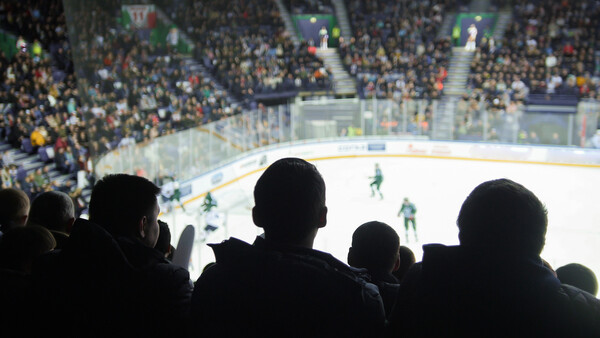
What does a Zamboni have in common with an arena's ventilation system?
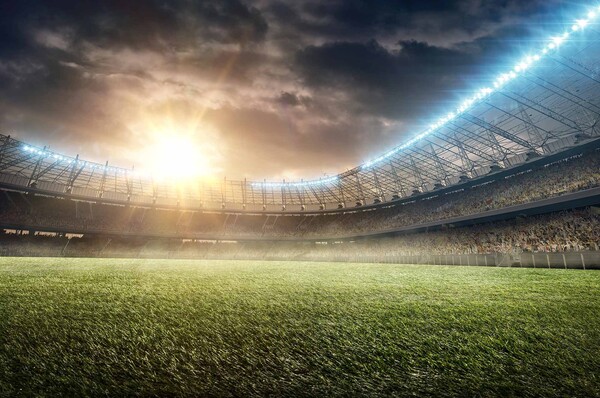
When every second matters, players should be set up for success. The building automation system can do just that.
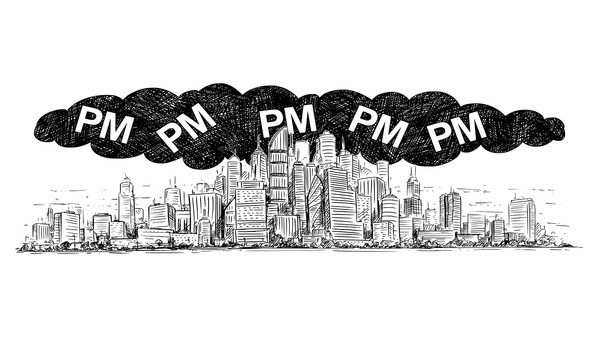
Discover particulate matter. Why does it matter, and how can you measure it?